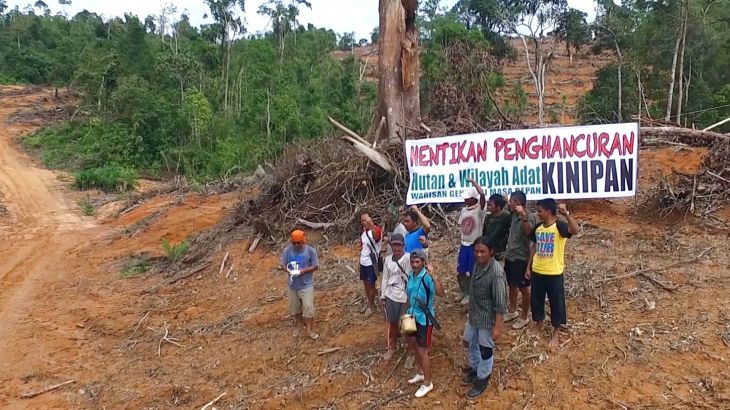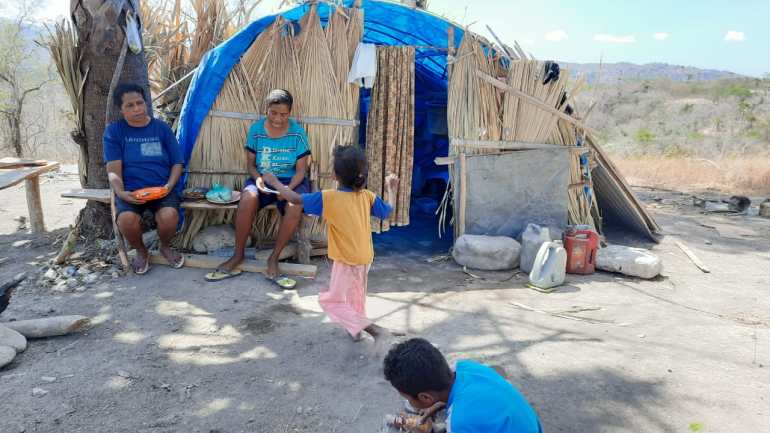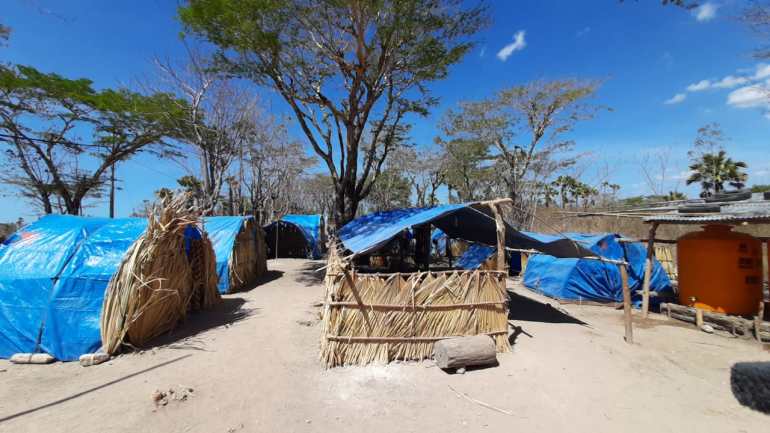Indigenous people sceptical of Indonesia mapping project

Jakarta, Indonesia – Every day members of the Besipae Indigenous community return to the pile of rubble where their homes once stood.
“This is all that’s left of my house,” resident Domanstefa cried, as she sifted through the pile of rocks.
Keep reading
list of 4 itemsHolding Up the Sky: Saving the Indigenous Yanomami tribe in Brazil’s Amazon
Indigenous people in Philippines’s north ‘ready to fight’ as tensions rise
Curfew announced for under-18s in Australia’s Alice Springs after unrest
“The local government tore it down. I don’t have a house any more. Now, I live under a tree.”
In August, the local government evicted her and the entire community of about 50 families. Many of them told Al Jazeera they were still traumatised from the eviction.
“They came with weapons – threatening us and shooting to the ground. The children were scared and crying,” 41-year-old farmer Daud Selan said.
Two months after the local government tore down their homes – they are homeless and have been sleeping in makeshift tents only metres away from where their houses stood.
They lived in simple houses and had few possessions. Now – whatever they did have has been torn from them.
One mother told Al Jazeera she cannot stop her young child from crying.
“My child keeps asking, where is our house? I said they tore it down. We don’t have a home any more,” Jita Leo said.

“Our family is really suffering.”
The Besipae Indigenous community lives off the land. Before they were evicted, they planted corn and tamarind and stored the harvest in their attics.
Their food stocks were also destroyed along with their houses.
Those who spoke with Al Jazeera said the local government gave them no notice before tearing down their homes.
“They offered to relocate us but they immediately tore down our houses before the replacement houses were even ready,” Mr Selan said.
A representative of the local government in East Nusa Tenggara province confirmed to Al Jazeera that they had authorised the use of tear gas to evict the community.
“The sound of the tear gas made them get up and leave … that’s not violence, the tear gas didn’t harm them,” East Nusa Tengara Provincial Government representative Sony Libing said.
“The land is a provincial government asset with huge potential. We had to relocate the people living there to develop agriculture and cow farming.”
Ownership of the land has been in dispute for decades. In the 1980s, it became a cattle ranch as part of a project with the Australian government.
According to the Besipae Indigenous community, the village elders rented out the land – on the condition that it still belonged to their people.
But the local government said the community relinquished their rights to the land.
“Poverty is high in that district and the land has potential, so that’s why we chose it. It is already a government asset,” Mr Libing said.
“The land certificate is a state document. We have told them, take us to court. Let the court decide who is the rightful owner.”
An ambitious mapping project
Disagreements about land are common across Indonesia, and corporations, local governments and Indigenous communities are often at odds about who owns what.
About 40 percent of Indonesia’s landmass is disputed and there are hundreds of continuing disputes about land.
It’s a problem the Indonesian government hopes to resolve – with a national map database that has been almost 10 years in the making.
The project was started by then-President Susilo Bambang Yudhoyono with the stated aim of addressing overlapping land claims through compiling maps from provincial authorities and government agencies.

Now – the data compilation is complete and the project is nearing its end.
“The government continues to work on this project because the target is to solve every land overlap problem,” Dodi Slamat Riyandi from the Office of the Coordinating Economic Minister said.
“We are dealing with problems that occurred in the past, like old permits. We don’t want people to become victims.”
Indigenous communities demand to be heard
Indigenous rights activists told Al Jazeera the process has been closed-off and opaque.
“The policy is diverting from its original purposes. Transparency is supposed to be one of the main principles of this policy but the map is inaccessible,” Muhammad Arman from the Indigenous Peoples Alliance of the Archipelago (AMAN) said.
Arman said at the beginning of the project, AMAN and other communities groups were more involved in the project – but in recent years, they have been excluded.
Other groups advocating for Indigenous rights said they have had the same experience.
In Kalimantan on the island of Borneo – overlapping land claims often arise between large palm oil corporations and local Indigenous communities.
There, the Indigenous Kinipan community has been embroiled in a dispute with the local government for years.
“They have tried to get acknowledgement of their existence by doing mapping and they give the result to the local and central government. But still, they have not got clear acknowledgement for their right to the land,” Safruddin from Save Our Borneo said.
“The people there feel like they are not being seen at all. The government does not acknowledge the Indigenous community there.”
Since 1860 – the Indigenous Kinipan community has lived in Kalimantan. Today, the community is made up of approximately 900 people.
In August, six community leaders were forcefully arrested for protesting against the expansion of a palm oil plantation.
They were arrested following a complaint by the palm oil company and have since been released.
Police said they arrested the group in connection with the theft of chainsaws.
One of the community leaders – Effendi Buhing – told Al Jazeera that the government always sides with corporations who they have accused of encroaching on their land for more than a decade.
“The arrest is an effort to silence us – to silence all who have been vocal about land encroachment,” he said.
“They accused us of theft but it is them who is stealing our forest. They are destroying the forest without our permission.”
He is sceptical the government has any real intention to protect Indigenous communities – or that the outcome of the mapping project will improve their lives.
“Indigenous people are always the ones defeated when it comes to relationships with investors,” he said.
“The government wants to close its eyes but we will continue fighting no matter what.”